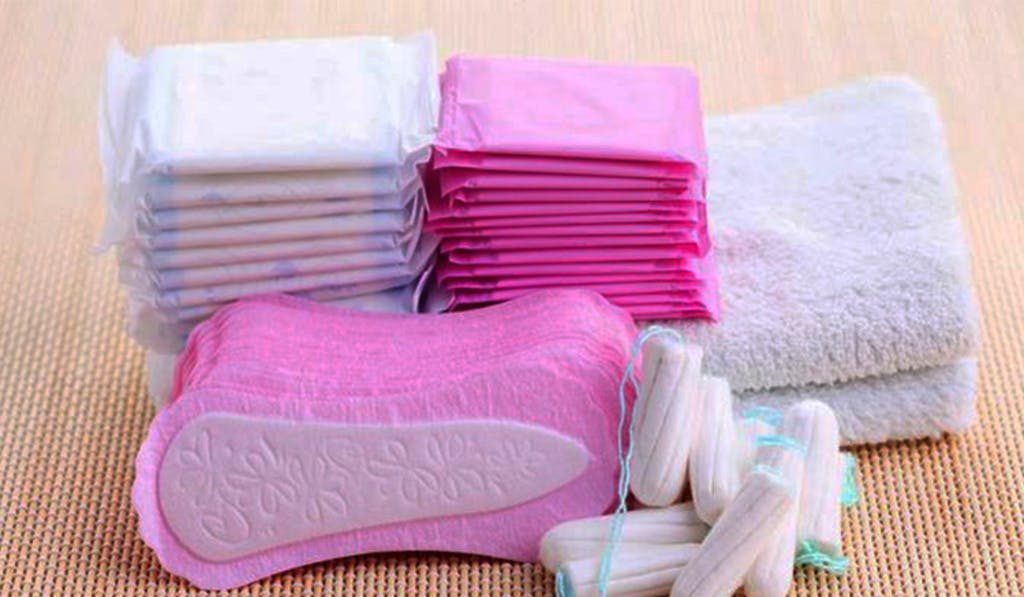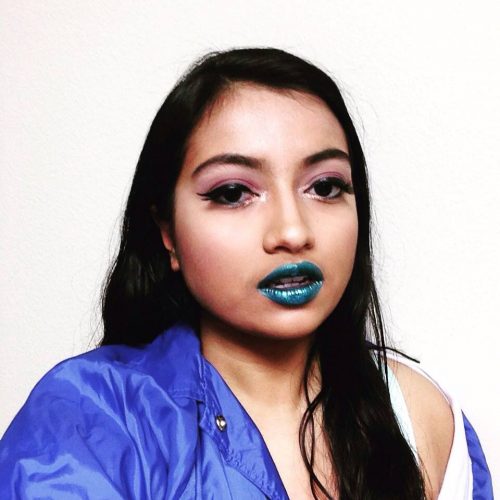
by Marina Ali – Follow @MarinaAli
Female gynecological health is a bit of a mystery. There’s Cosmopolitan telling you 1,000 ways to keep your pussy poppin’ and then you have your awkward, uneasy trips to your local gynecologist.
But the thing is, gynecological health should not be this complicated! Half of the world is composed of people who have vaginas and uteruses. The biologically female collective go through things like periods, babies, and sex. Yet, it’s hard to find the right and simple information. Here are ten simple and easy things you can do to maintain your gynecological health.
1) Schedule that yearly OB/GYN visit
You’ve heard the old adage before: your body is like a machine. Things are prone to get out of wack sometimes, so make sure you’re consistently maintaining your health. An annual OB/GYN check-up can keep you on track for good health. A gynecological practitioner can detect if something is wrong before you even feel symptoms. Also, you can talk about anything that you feel is wrong or could be better. Any advice you get from us at Brown Girl Magazine is good, but it pales in comparison to the help you can get from an OB/GYN practitioner. So don’t miss that annual exam! Most professionals say that you should get a gynecological exam at around age 19 and then yearly after that. Also, it helps to get a pap smear every 3 to 5 years, because they’re the first step in detecting abnormalities. Most gynecological specialists will do a pap smear with every annual visit. If this is your first time getting one, then check out this fact sheet from The American Congress of Obstetricians and Gynecologists.
[Read Related: Ladies, Mommies, Aunties…Can We Please Start Talking About Sex With Our Daughters?]
2) Stop using douches
Your vagina is a self cleaning organ!!! It is normal for your private parts to smell a certain way. Vaginas are naturally extremely acidic and this will cause your panties to discolor. I’m sorry about those $30 Victoria’s Secret panties you recently bought, but they too will discolor. No matter how often you wash your panties, they will never look the same as the day you purchased them and they will always discolor. Douching will completely throw off your vagina’s normal pH balance. Also, the healthy bacteria that live there will be killed off and the naturally occurring yeast colonies will overgrow, giving you a yeast infection later on. Save yourself the trouble and just use regular water when you shower. You don’t need Summer’s Eve or any of those special “feminine washes.” Your vagina is good as it is. The only time you need to be worried is when it smells completely different from its normal day-to-day scent or if there’s too much itching, any pain, or major changes to discharge color.That’s when you need to use tested, safe, and organic vaginal spray or if it gets worse, see a medical professional, NOT use a douche.
3) Use protection
Evolution went a very interesting direction in developing modern day humans. Human sperm is basic; thus, having unprotected sex can trigger an imbalance. Use a condom if your nether regions become irritated after a hot and heavy session. If unprotected sex continues to cause irritation, then call your gynecologist. Sometimes, people can have semen allergies. If left untreated, they can hinder your future child-bearing prospects.
4) Eat a balanced diet
This is just a no-brainer. Eating healthy is an essential part of maintaining one’s body. Many chronic illnesses related to poor nutrition can manifest into gynecological problems. For example, obesity is a major risk factor for ovarian cancer. But sometimes, it can be hard to eat right when there is so little time and delicious french fries everywhere. Have no fear! Brown Girl Magazine is a hub for quick, healthy, and tasty recipes. You deserve to eat better and cleaner tonight, so click here to get those recipes.
5) Exercise regularly
Exercising is just another facet of healthy living. Aim for a minimum of 30 minutes of moderate to intense physical activity to stay healthy. It’s hard to exercise when there are only 24 hours in a day to make that cash, maintain your personal relationships, take care of your kids/pets/both, do your hobbies, and get 8 hours of sleep. Because the struggle is #real, we’ve left a few fitness tips here to make your life easier.
[Read Related: #NotOvaryActing: My Awkward First Time at the Gyno]
6) Actually read the directions on your pad and tampon boxes
Yes, toxic shock syndrome (TSS) is a thing. Yes, it is scary. A few years ago, people were freaked out by the story of model Lauren Wasser losing her leg to TSS. Don’t get your legs chopped off; read your pad and tampon boxes. They have key information on how long you should use them. If you leave your tampon in your body for too long, bacteria can build up and cause an infection. Sometimes, this can get gangrenous and affect your health for years to come. Also, many pad and tampon boxes will list the components of their products. Thus, if you’re sensitive to fragrances or allergic to chemicals used during the manufacturing process, you might find that information on the tampon or period box.
7) Wear breathable cotton panties
Those Victoria’s Secret satin and lace thongs may make you feel sexy, but wearing underwear like that 24/7 can cause vaginal problems. Excessive tugging of the sensitive skin around your private parts can cause chafing and irritation. Also, your vagina needs to breathe! This helps reduce moisture build-up that can cause infections. Invest in cotton bikinis, briefs and/or boy shorts for underwear. Cotton underwear has a number of benefits over other types of underwear like reduced infections and abnormal smells. Try a pair of THINX panties! You can wear them during your period without using any pads and tampons.
8) Avoid smoking and excessive alcohol
This is another no-brainer. Obviously, consuming excessive alcohol, abusing drugs, and smoking cigarettes are bad for your health. Addiction can be a tricky thing, as it often falls into the category of mental illness. If you have a debilitating mental illness, it can be hard to take care of your general health, not just your gynecological health. Thus, it’s crucial to have stable mental health in order to translate it to overall wellness. When you’re in a space of zero addiction and total mental ease, you’ll be better at caring for your vagina. On another note, the gavel hasn’t fallen on the gynecological benefits of marijuana and its derivative chemicals, CBD and THC. Until then, consume your joints with discretion.
[Read Related: #WomensHealthWednesday: Abortion Literacy and Women’s Autonomy]
9) Try kegels or some other pelvic exercise
Kegels aren’t just for people who have given birth and senior citizens! You too can benefit from kegels and other pelvic exercises. They’re reported to help with incontinence, bowel problems, and weak pelvic floor muscles. You don’t have to do them by yourself, either. Men and women can reap the perks of doing pelvic exercises. Click here for a few easy kegel workouts you can incorporate into your day. The only major thing to keep in mind is that you don’t want to overwork your pelvic muscles. This is will cause them to get so tired that they get weak.
10) Avoid baby powder at all costs
No one cares if your mother or aunt powdered her vagina with Johnson & Johnson’s Baby Powder every day for the past 30 years and is doing fine. This stuff is just bad for you in general. As mentioned before, your vagina is self-cleaning. It will smell a certain way based on your body’s microflora. No other human in the world will have a vagina scent quite like yours, because they don’t have the same bacterial microbiome as you. If you’re truly worried that your scent is abnormal, check with your gynecologist. A quick check up may help you more than a bottle of baby powder ever could.
Ladies, we are #NotOvaryacting. Your health “down there” is important and doesn’t have to be over complicated. Feel free to share with us any other tips you may have for hygiene and risk prevention.
Disclaimer: The information on this article is not intended or implied to be a substitute for professional medical advice, diagnosis or treatment. All content, including text, graphics, images and information, contained on or available through this web site is for general information purposes only.
 Marina Ali is a health studies student at UT Tyler. In her spare time, she likes writing nonfiction, making music, cooking, reading science fiction, and dancing awkwardly with friends at school functions. Follow Marina on Twitter and Instagram for her latest happenings.
Marina Ali is a health studies student at UT Tyler. In her spare time, she likes writing nonfiction, making music, cooking, reading science fiction, and dancing awkwardly with friends at school functions. Follow Marina on Twitter and Instagram for her latest happenings.




